Breakout Sessions

From Lady Susan
(Courtesy of Juvenilia Press)
We will have four breakout sessions of five speakers each. When each session premieres, you can choose one breakout to watch, or switch among multiple speakers. Q&A will be concurrent with the presentations in the form of text chat. Presentations will be available to registrants for 30 days after the AGM, so that you can see as many breakouts as you wish.
Breakout A - 1:30-2:15 Saturday
A1. "Madam, you are a Phoenix," Or Dedications to Cassandra and the Young Jane Austen's Sense of Herself as "The Author"
Professor Kathryn Davis, University of Dallas
Focusing specifically on the juvenilia dedications to Cassandra Austen and the four pieces they introduce, this breakout session will explore the young Jane Austen's most pressing concerns as a burgeoning writer. The central questions for the session will be, why does the young Jane Austen write? And how can studying these short pieces in light of their dedications help us to understand why Austen turned to narrative fiction - rather than, for instance, poetry or history - as an adult writer? With the History, the Ode, Catharine, and The Beautifull Cassandra as texts under discussion, "this" will "be a" session "well spent!"
Kathryn Davis is an Assistant Professor of English at the University of Dallas. She has spoken at JASNA AGMs in Fort Worth, Montreal, Louisville and Kansas City. Her writing on Austen has been published in Persuasions and Persuasions On-Line. She is the author of Liberty in Jane Austen’s Persuasion (Lehigh University Press, 2016).
A2. The Mocking of Home: Jane Austen and the Juvenilia
Professor Susan Jones, Palm Beach Atlantic University
In her juvenilia, Austen develops a pattern of examining and mocking the home and its inhabitants, holding their erratic actions up to an ironic and comedic scrutiny which she then inscribes in a series of short novels, plays, and other early forms. The comedic early writing creates a path to the mature vision. This presentation will explore how Austen’s satirical dissection of the scattered and disconnected home life in the juvenilia foreshadows the settled moral foundation of Austen’s later work, demonstrating how Austen’s sharp eye for irony bridges her early vision and her later genius.
Susan E. Jones, former co-coordinator of the Palm Beaches Region, is a Professor of English at Palm Beach Atlantic University. She has presented papers at AGMs including Montreal, Ft. Worth, Philadelphia, Tucson, Los Angeles, Milwaukee, Washington, D.C., Brooklyn, and Kansas City. She was 2014 East Coast Lecturer for JASNA. Her work has been published in Persuasions and Persuasions On-Line. She co-authored Jane Austen’s Guide to Thrift: An Independent Woman’s Advice in Living Within One’s Means.
A3. Austen's Inharmonious Numbers
Professor Bharat Tandon, University of East Anglia
Austen’s teenage writings are rightly celebrated for their creatively anarchic employment of disproportion; if eighteenth-century rhetoric guides such as Hugh Blair’s Rhetoric and Belles Lettres (which gets a significant namecheck in Northanger Abbey) emphasized the importance of harmonious ‘numbers’ in composition, then the juvenilia take great delight in upsetting such harmonies, turning the familiar rhythms of late-Augustan prose to altogether less decorous ends. This presentation will explore the ways in which the juvenilia bequeath to the published novels a way of inhabiting stylistic conventions whilst simultaneously exploding them, as well as the imaginative connections between rhetorical ‘numbers’ and actual numbers and figures.
Bharat Tandon teaches at the University of East Anglia, Norwich, UK. He is the author of Jane Austen and the Morality of Conversation (2003), edited Emma: an Annotated Edition for Harvard University Press (2012), and delivered the Carol Medine Moss Memorial Lecture, ‘Labours not her own: Emma and the invisible world’ at the 2016 JASNA AGM in Washington, DC. He is currently completing a book on echoing and haunting in Victorian writing.
A4. Why Juvenilia? An Introduction to Early Writings.
Dr. Christine Alexander, University of New South Wales
The study of literary juvenilia is a relatively recent phenomenon. Yet there have always been young people who write, usually privately or as part of family entertainment—as in the case of Jane Austen. Apart from exceptional works published while the writers were still young, there has been little interest in these early writings, even in those penned by authors who later became famous. But this has been gradually changing. In recent years, childhood and teenage writings have been earning considerable respect. Why? What has changed among readers and the academy? What are the significance of juvenilia and what might we learn from them? This paper will survey a variety of youthful writings, focusing especially on imitation, in order to provide a context for our exploration of Jane Austen's witty and irreverent juvenilia.
Christine Alexander is Emeritus Scientia Professor of English at UNSW Sydney, Fellow of the Australian Academy of the Humanities, and has been general editor of the Juvenilia Press project for eighteen years. She has published extensively on the Brontës and literary juvenilia, including the British Academy prize-winning study The Early Writings of Charlotte Brontë. She co-edited the first book on literary juvenilia with Juliet McMaster, The Child Writer from Austen to Woolf, and published the Penguin critical edition of Jane Austen: Love and Freindship and Other Youthful Writings.
A5. Catharine, Catherine, and Young Jane Reading History: Jane Austen and Historical Writing
Professor Ryoko Doi, Shirayuri University
This session will examine Jane Austen’s early writings to clarify her view on historical writings of the time, with particular focus on her interest in Mary, Queen of Scots. Her works such as The History of England, together with her marginalia into Knox’s Elegant Extracts, reveal young Jane’s strong concern with the nature of historical writing. In Catharine, too, she reminds us of the Scottish queen’s history, but transforms it with an unexpected twist. We will discover how these works show that her continuing interest in the fictionality of historical writing contributed to her development as a novelist.
Ryoko Doi is Associate Professor of English at Shirayuri University in Tokyo, Japan. Her research areas include eighteenth-century British literature and visual arts. She has recently published articles on Austen’s juvenilia in The Journal of the JASJ (the Jane Austen Society of Japan), No. 10, 2016, No. 11, 2017, and No. 13, 2019.
Breakout B - 3:45-4:30 Saturday
B1. “A Staymaker of Edinburgh”: Underpinnings in the Age of Austen
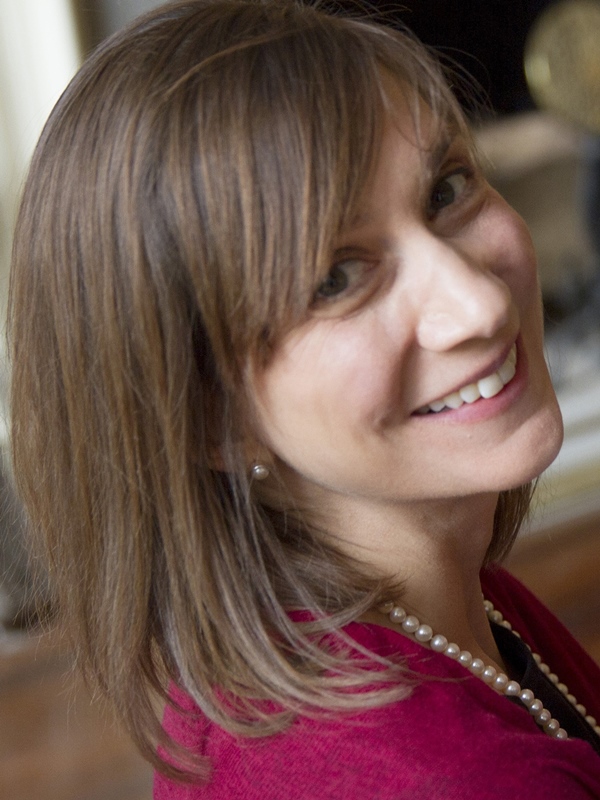
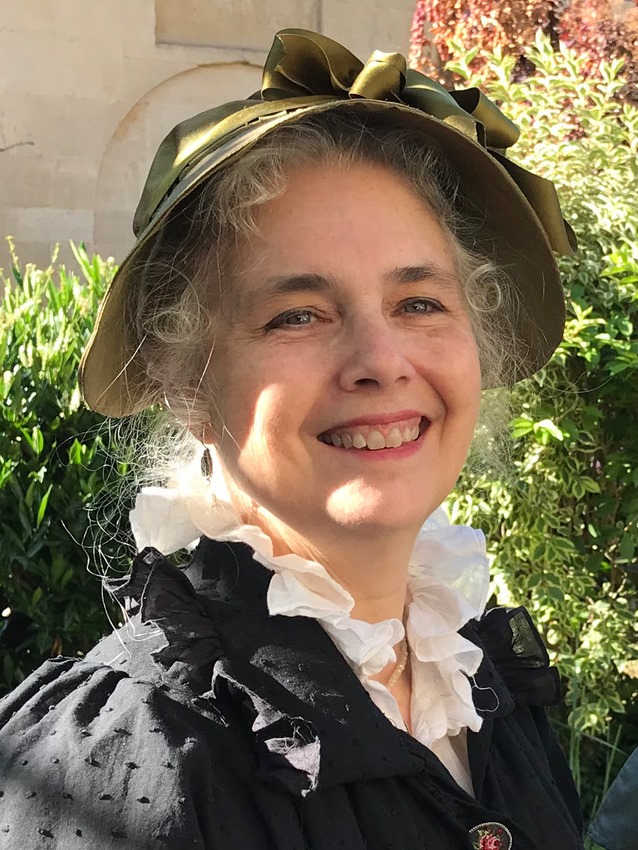
Kristen Miller Zohn, Georgia Region, and Mackenzie Sholtz, South Carolina Region
In Love and Friendship, Gustavus says, “…it is generally beleived [sic] that Philander, is the son of one Philip Jones a Bricklayer and that my Father was one Gregory Staves a Staymaker of Edinburgh.” During the years of Austen’s life, the silhouettes of clothing and the staymaker’s trade went through radical changes that were echoed in the era’s underpinnings. We will explore the history of staymaking and its place in Georgian fashion and society, the changing styles of stays and corsets during the era, and the raucousness of both Austen’s juvenilia and the depiction of stays in satirical prints.
Art historian Kristen Miller Zohn is JASNA Georgia Regional Coordinator and a Directly Elected Board Member who has lectured and published articles about Austen and the visual arts. She is Executive Director of Costume Society of America and also serves as curator for the Lauren Rogers Museum of Art. Mackenzie Anderson Sholtz is an independent clothing historian. She created the sewing pattern line, Fig Leaf Patterns®, which reproduces garments from museum collections. Her published work includes scaled drawings in An Agreeable Tyrant: Fashion After the Revolution and articles in Clothing and Fashion: American Fashion from Head to Toe.
B2. The Determined Young Author Then and Now


Dr. Juliette Wells, Goucher College, and Avery Yoder-Wells, Maryland Region
How have the practices of a youthful novelist-in-training changed since Jane Austen’s childhood? Had she been born in our own time, what resources would have been available to her, and how might she have proceeded to develop as a writer? Co-presented by an Austen scholar and a fourteen-year-old fiction writer, this illustrated talk will compare the opportunities Jane enjoyed and the obstacles she faced to those experienced by an aspiring young novelist of the twenty-first century.
Juliette Wells, the Elizabeth Conolly Todd Distinguished Professor of English at Goucher College, speaks regularly to JASNA audiences at AGMs and regional meetings, including recent service as JASNA’s 2019–2020 East Coast Traveling Lecturer. Dr. Wells’s books include Reading Austen in America (2017), Everybody's Jane: Austen in the Popular Imagination (2011), and 200th-anniversary editions of Persuasion (2017) and Emma (2015) for Penguin Classics. Avery Yoder-Wells is an eighth grader at Dumbarton Middle School in Towson, Maryland. The editor of the Dumbarton school newspaper, Avery received three Gold Keys—for novel writing, humor, and flash fiction—in the 2020 Scholastic Writing Awards (Maryland).
B3. "Well Behaved Women Seldom Make History": Jane Austen, Women Historians, and Histories of Women

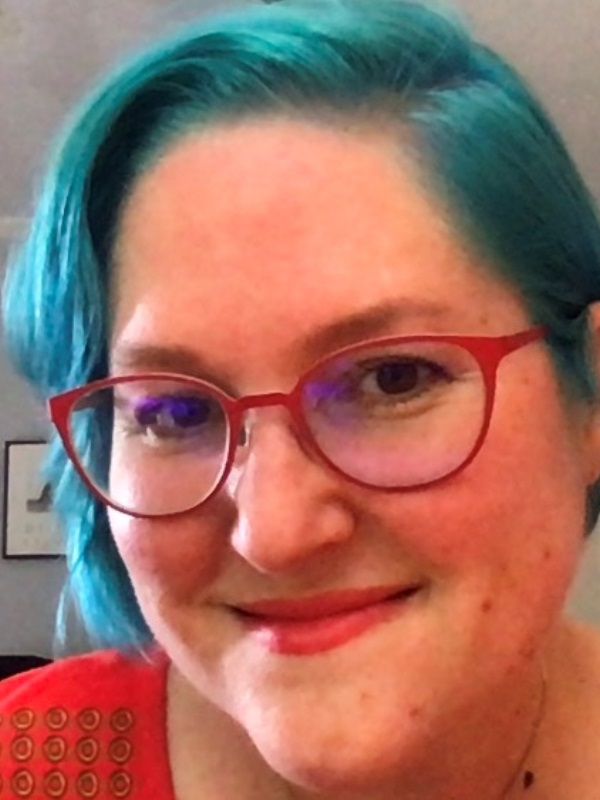
Professor Caitlin Kelly, Case Western Reserve University, and Professor Misty Krueger, University of Maine at Farmington
Women have long recorded history, but in Austen’s time, spurred on by the many revolutions across the Atlantic world, women began to claim the title of “historian” as their own. This session will explain how this happened and why it matters for reading Austen’s work. The work of women historians provides an important context for understanding Austen’s forays into writing history, notably her History of England and how she characterized historical women in her parody. This session also interrogates the category of history by looking at examples from the juvenilia that provide “histories” of girls behaving badly.
Caitlin Kelly is a Lecturer in the Department of English at Case Western Reserve University. Her research focuses on gender, authority, and the novel 1700-1830, including, of course, Jane Austen’s work. She teaches courses on Austen in pop culture, and in 2018 her article on teaching The Lizzie Bennet Diaries was published in the journal Pedagogy. Caitlin served as the Project Coordinator for the NEH Summer Seminar “Jane Austen and Her Contemporaries” in 2012. Misty Krueger is a member of JASNA-Maine and the faculty at the University of Maine at Farmington. She participated in the 2012 Austen-themed National Endowment for the Humanities summer program, co-edited an issue for Persuasions On-Line, was the 2017 JASNA International Visitor, and has published on Austen’s juvenilia, three of her novels, and Austen adaptation, pedagogy, popular culture, and social media. She is in the formative stage of a book project on Austen’s juvenilia and adolescence.
B4. Fevers, Swoons, and Tears: What if Jane Austen Was Reading Mary Wollstonecraft in the Analytical Review?
 Jessica McGivney, New York Metropolitan Region
Jessica McGivney, New York Metropolitan Region
During some of the same years Jane Austen was merrily writing her juvenilia, Mary Wollstonecraft was ridiculing sentimental novels — and sometimes chastising the women who had written them — in the pages of the Analytical Review. Would Austen have been offended or amused by the reviews she might have read? Would Wollstonecraft have turned a similar eye on the writer and stories in the juvenilia, or recognized a kindred spirit in these deliberate works of “folly, affectation, and improbability… scenes [spun] out of fevers, swoons, and tears?”
Jessica McGivney is a librarian at Farmingdale State College. She first examined Wollstonecraft’s book reviews as part of her Master’s thesis on the life of Mary Wollstonecraft. A frequent re-reader of Jane Austen, her research interests include the intersections of the long eighteenth century, life writing, and film.
B5. Filming/Filling in the Gaps: Sanditon and Such on Screen
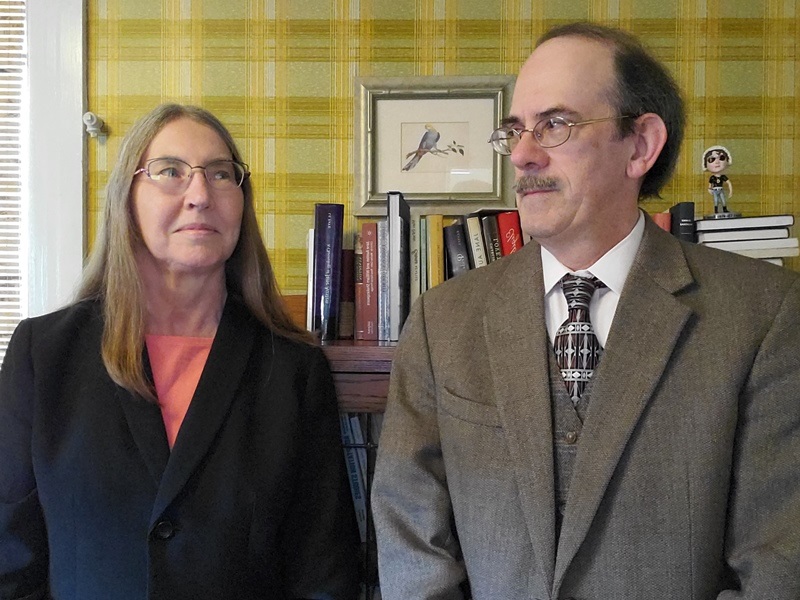
Dr. Linda Troost, Washington & Jefferson College, and Sayre Greenfield, University of Pittsburgh
In his adaptations, Andrew Davies usually faces the challenge of compression. In his recent multipart adaptation of Sanditon for ITV, however, he faced the challenge of expansion. What freedom does a filmmaker gain when there is no film tradition of a text to acknowledge or revolt against? How does a screenwriter fill in the gaps for an audience unlikely to be familiar with the source text? What does one do when most of the source text is gaps—there aren’t enough words, there isn’t enough plot, or there isn’t an ending? What possible future directions for Austen on the screen are now possible?
Linda Troost is a professor of English at Washington & Jefferson College and Sayre Greenfield is a professor of English at the University of Pittsburgh at Greensburg. Together, they edited Jane Austen in Hollywood, the first book about the Austen film phenomenon. They have lectured in the United States, Canada, England, Australia, and New Zealand, have published widely on Jane Austen, and are frequent speakers at JASNA AGMs. In the spring of 2015, they spent several weeks at the Chawton House Library as Visiting Fellows. They are both Life Members of JASNA.
Breakout C - 2:00-2:45 Sunday
C1. The Female "Ramble Novel" and Austen's Juvenilia: Concluding with Comments about How We Read Pride and Prejudice
Professor Douglas Murray, Belmont University
How did Jane Austen so confidently create that mix of whimsy and cheeky exuberance which characterizes her juvenilia? This presentation will argue that Austen adopted the insouciant tone and mobile heroines of her juvenilia from a now-forgotten group of books, the female “Ramble Novels," of the second half of the 18th century. Works like The History of Sophia Shakespear (1753) and The Expedition of Little Pickle, or the Pretty Plotter (1792) influenced Austen’s early fiction and also Pride and Prejudice, which contains a “ramble novel” embedded in its very plot.
Douglas Murray (Belmont University, Nashville, Tennessee) has spoken at five JASNA AGMs and to the Jane Austen Society of Australia. His Austen essays appear in Persuasions, Nineteenth-Century Fiction, and Review of English Studies. He, with Margaret Doody, edited Austen’s Catharine and Other Writings (Oxford University Press). In June 2017, he was one of the final Chawton Fellows at the Chawton House Library, where he did much of the research for his JASNA 2020 talk.
C2. What Did the Austen Children Wear and Why? New Trends in British Children's Clothing, 1760-1800
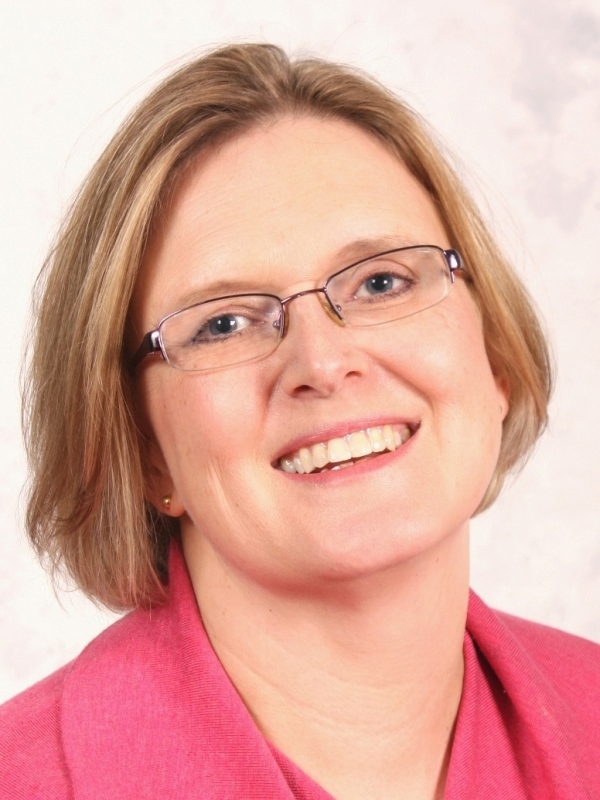
Alden O'Brien, Washington, DC, Metropolitan Region
During the Austen children’s youth, Enlightenment ideas of human rights and related concerns led to new ideas of how to raise and clothe British children. Garments specific to childhood, allowing more freedom of movement, entered children’s wear. By 1800, these were adopted into adult clothing. This illustrated talk will discuss garments likely worn by the Austen children, and connect them to new childrearing theories, literature, Marie Antoinette and the French Revolution, garden design, the idealization of childhood, Whig politics, and other cultural trends to explain the new children’s fashions and their influence on adult styles.
Alden O’Brien received her BA in Art History from Barnard College and her MA in Museum Studies in Costume & Textiles from the Fashion Institute of Technology in New York City. As Curator of Costume and Textiles at the DAR Museum, she has curated numerous exhibits on costume, toys, and quilts, including “The Stuff of Childhood” about the history and material culture of American childrearing, and “An Agreeable Tyrant: Fashion After the Revolution,” on view during the DC AGM. Alden has presented at the Los Angeles, Louisville, and Williamsburg AGMs.
C3. Rave On: Young Jane Austen's Parody of Eliza Nugent Bromley's Distracted Sentimental Heroine in Love and Friendship
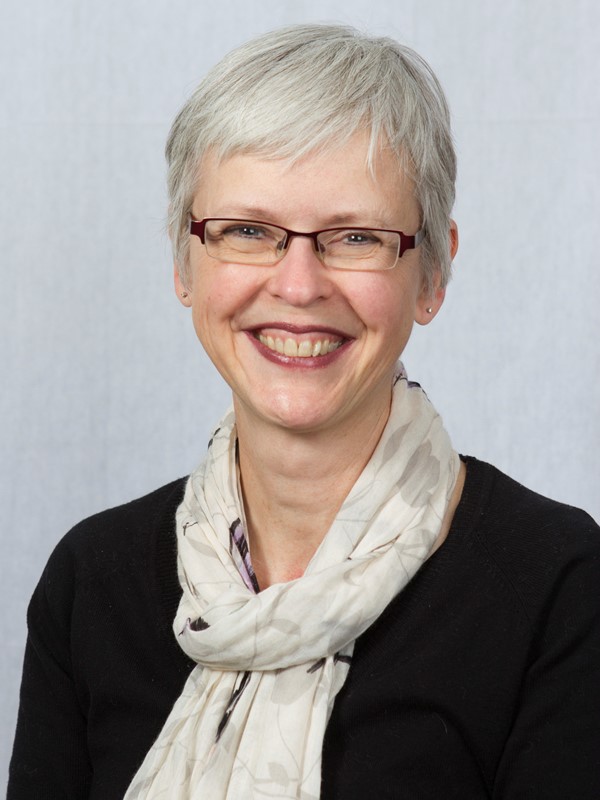
Dr. Lesley Peterson, Manitoba Region
Thanks to Marvin Mudrick and Juliet McMaster, it is well known that Laura and Augustus, published anonymously in 1784 by Eliza Nugent Bromley, was a significant source of Jane Austen’s inspired burlesque, Love & Freindship (completed June 1790). However, there is good reason to believe that Jane Austen’s work in Volume the Second was even more influenced by Bromley’s second sentimental romance, The History of Sir Charles Bentinck, Bart. and Louisa Cavendish (1788?), again published anonymously but advertised as being “By the author of Laura and Augustus.” Although I will provide brief plot overviews of both Bromley’s novels (now little known), my presentation will focus on young Jane Austen’s response to what she found there, especially two staples of what Mudrick called “the lachrymose novel”: the distraction scene (in which the heroine raves over the loss of a loved one) and the recognition scene (in which a stranger suddenly recognizes the hero or heroine as his child or grandchild). My approach will be a practical one: what can we learn about the art of parody from observing how Jane Austen went about it in Love and Freindship? Bring pencil and paper to practice the basics of distracted raving and shocking revelation.
Lesley Peterson is retired Professor of English, having taught Shakespeare and Austen at the University of North Alabama. She is editor of The Journal of Juvenilia Studies and has published on Austen's juvenilia in Persuasions On-Line.
C4. Gloom, Ghosts, and Grottos: Nighttime Wanderings in the Juvenilia

Dr. Elizabeth Veisz, Bridgewater State University
This session examines nighttime wanderings in the juvenilia—particularly Ode to Pity and Evelyn — within the context of 18th-century Graveyard-School poetry. Graveyard poems typically feature a solitary speaker whose nocturnal meanderings spark meditations on mortality and the afterlife. Some also offer spine-tingling Gothic frights. Austen’s Ode to Pity signals her familiarity with this mode, while the dubious hero of Evelyn displays a crudely superstitious response to the night. What happens, this session asks, when the irreverence of the juvenilia is brought to bear on a literary tradition defined by reverential awe?
Elizabeth Veisz is an Associate Professor of English at Bridgewater State University in southeastern Massachusetts, where she teaches courses in 18th-century British literature, women’s writing, detective fiction, Gothic fiction, and, of course, Jane Austen. She is currently researching anti-supernatural writing in the long eighteenth century and beyond. This is her second AGM presentation, after presenting “Northanger Abbey and the Fictional Female Detective” at last year’s Williamsburg AGM.
C5. Three DNA Lines from Austen's Juvenilia

Collins Hemingway, Southern Oregon Region
This presentation uses a careful analysis of structure and theme to demonstrate that, from her teenage experiments in form, three distinct lines of “DNA” emerged to create strikingly different results in her first three major novels. The talk will show which specific sets of her juvenilia evolved into which parts of her first three books (NA, S&S, P&P). The talk will demonstrate the evolution of a writer from a gifted adolescent to a mature literary artist and what she learned along the way. There will be a genealogical chart and questions for the audience.
Collins has lectured on Austen and the Regency era in the U.S., England, and Australia. He presented at the 2018 and 2019 AGMs. He has published in Persuasions and in Sensibilities, the journal of the Jane Austen Society of Australia (JASA), and the JASA Chronicle. He is a regular contributor to Jane Austen’s Regency World. He has written literary fiction based on the life of Austen. This talk is part of a collection of essays on Austen’s development as a writer.
Breakout D - 4:00-4:45 Sunday
D1. How is Jane Austen Like Your Teenager?

Professor Wendy Jones, Central and Western New York Region
Writing enabled Austen to express the risk-taking, exploration, and rebellion typical of teens in an appropriate forum. Viewing the "teen" qualities of Austen's juvenilia in the context of psychology shows a teenager channeling energies that might have been destructive into her extraordinary writing. Austen's satire mocks adult pieties in the same spirit that your sarcastic teenager might dismiss some of your cherished beliefs, practices, and advice. Adolescence, however, generates not only negativity but also daring, passion, and originality. Austen’s juvenilia evinces values and qualities that remained with her throughout her life.
Wendy Jones is an independent scholar and psychotherapist who also teaches courses in English and writing. Her area of literary specialization is the novel, particularly the eighteenth-century novel. She is the author of Jane on the Brain: Exploring the Science of Social Intelligence with Jane Austen; Consensual Fictions: Women, Liberalism, and the English Novel; and essays on Austen, Richardson and other writers. She blogs for Psychology Today about literature and psychology.
D2. "Abjuring all Future Attachments": Concluding Lady Susan
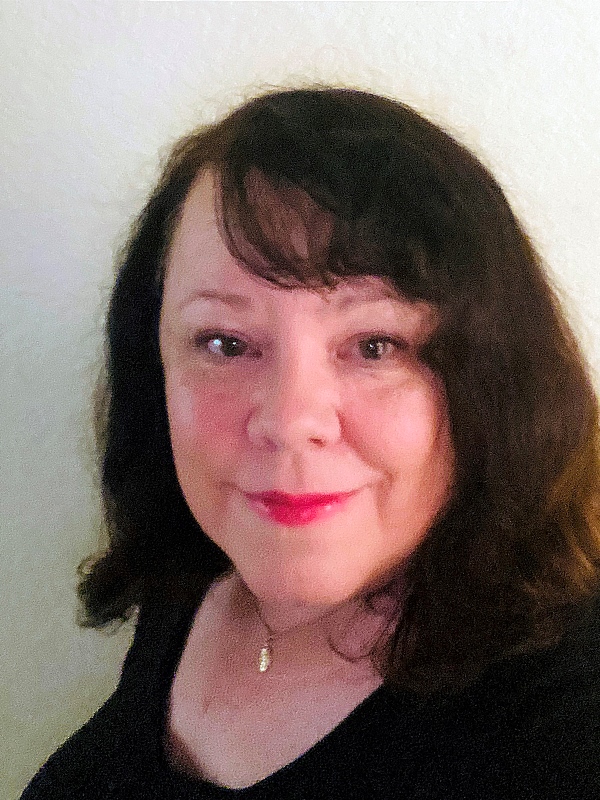
Professor Theresa Kenney, University of Dallas
Austen makes Reginald DeCourcy central in her novella while risking his appearing flat or unworthy of the reader's regard (only three of the forty letters are in his voice). Austen nonetheless develops his sympathetic and attractive qualities side by side with his gullible ones, requiring the reader to construct a full picture of Reginald from various different points of view. His swearing off of love at the end of the story would blockade the happy ending; but his inconstancy, representing the variable human heart, serves Austen's turn as he is finessed into an affection for Frederica. Nevertheless, it is affection, not deluded devotion.
Dr. Kenney is former English Department chair and directs the Medieval/Renaissance and Christian Contemplative Tradition minors at the University of Dallas. Along with courses in classical epic, Dante, and Milton, she teaches Medieval and Early Modern literature, and the novel with a focus on Jane Austen. Her books include Women Are Not Human: An Anonymous Treatise and Responses, The Christ Child in Medieval Culture: Alpha es et O! and the forthcoming "All Wonders in One Sight": The Christ Child Among the Elizabethan and Stuart Poets. She has published on Austen, Bronte, Dante, Dickens, Donne, and Southwell, and has participated in many AGMs over the last fifteen years.
D3. Anti-Historical Austen: From The History of England to Northanger Abbey

Professor Jason Solinger, University of Mississippi
This breakout session will examine Austen’s parody of history books, the History of England. A lecture slideshow, the laugh-filled session should put to rest the notion that the text was a mere youthful lark. On the contrary, the History articulates questions that shaped the adjacent disciplines of literature and history. How much poetic license are we willing to grant the historian? On what basis did Austen’s predecessors call their own novels “histories”? Who is better at explaining the motivations that drive people, the historian or the novelist? Which discourse—fiction or history—better prepares readers for being in the world?
Jason Solinger is an Associate Professor of English at the University of Mississippi, where he teaches classes in eighteenth- and nineteenth-century literature. Solinger is the author of Becoming the Gentleman: British Literature and the Invention of Modern Masculinity, 1660-1815, a book that explains eighteenth-century Britons’ obsession with the figure of the gentleman. He is currently at work on a new book exploring the ways that Austen’s readers have shaped our ideas about literature.
D4. Frivolity and Fainting in "Love and Freindship" and "The Mystery": Reinterpreting Nonsense in the Juvenilia
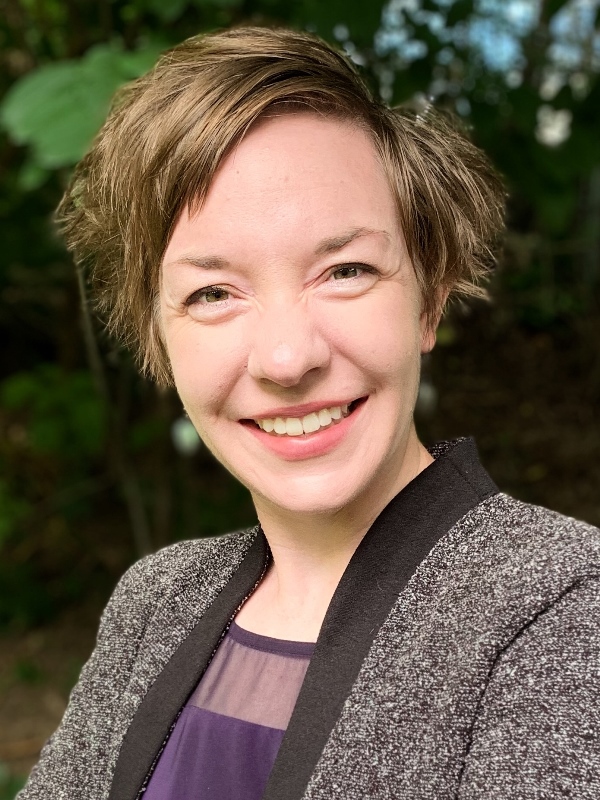
Amy Vander Heiden, Minnesota Region
Love and Freindship is full of nonsense—linguistic and bodily excesses—while The Mystery: An Unfinished Comedy is defined by its lack—verbal and physical absences. Austen engages with nonsense as frivolity and fainting to blur the boundary between sense and nonsense. This presentation juxtaposes specific passages from the novella and playlet, with a focus on punctuation, to demonstrate how Austen’s nonsense is a critical commentary on her reality.
Amy Vander Heiden is a high school English teacher with a Master of Arts in Literature. She has attended previous AGMs and brings her passion for writing and teaching to her love of Austen. Her 2019 master’s essay focused on Austen’s juvenilia.
D5. Reason, Romanticism, or Revolution? Jane Austen rewrites Charlotte Smith in "Catharine, or the Bower"
Dr. Elaine Bander, Montreal Region
Catharine, or the Bower, Jane Austen’s almost-last work of juvenilia and first attempt at realist fiction, takes the elements, tropes, and devices of Smith’s first four novels and scales them down to three or four families in a country village in the midland counties of England, drawn with a much finer brush than Smith’s. Smith’s Emmeline (1788), Ethelinde (1789), Celestina (1791), and Desmond (1792) are concerned with reason, romanticism, and revolution, but, as Elaine will discuss, Austen rejects Smith’s romanticism and revolutionary politics, opting instead for realism.
Elaine Bander, retired from the Dawson College English Department, has served JASNA as RC, VP (Publications), Traveling Lecturer, International Visitor, and frequent speaker at AGMs and Regions. She is currently President of JASNA (Canada) and a member of the Editorial Board of Persuasions. Her chapter on “Jane Austen and the Georgian Novel” is forthcoming in The Routledge Companion to Jane Austen, edited by Cheryl A. Wilson and Maria Frawley.